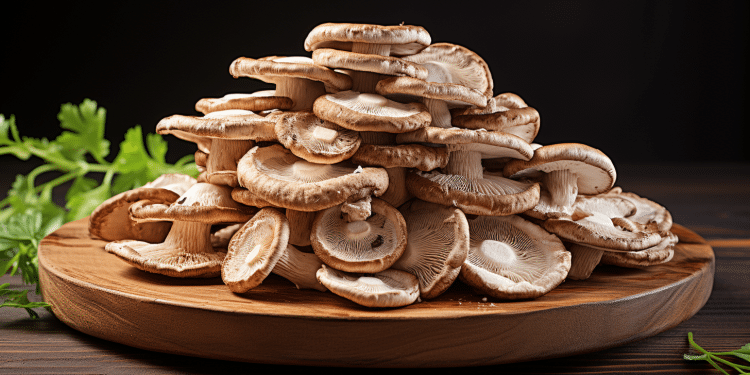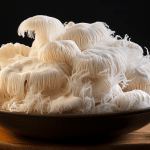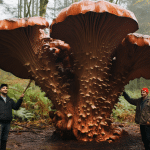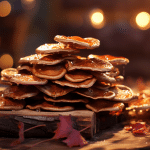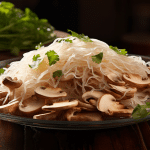Vitamin D is an essential vitamin which strengthens the immune system and plays vital roles in the metabolism of humans. Did you know that delicious mushrooms are a source of vitamin D, and you can naturally increase your levels by giving them exposure to sunlight.
Do Shiitake Mushrooms Contain Vitamin D?
Yes, Shiitake mushrooms do contain vitamin D. About 3IU’s per one mushroom. Although if you expose your sliced shiitake mushrooms to sunlight (gills up), the amount of vitamin D will increase dramatically. We explain this further down below.
We evolved to live under much greater amounts of sunshine than we do today. We make our own Vitamin D as the sun hits our skin cells. However, many people living in the Northern Hemisphere experience lower levels of vitamin D in the fall, winter, and spring.
Fortunately, you can create your own supply of vitamin D-rich mushrooms by simply exposing them to sunlight. You can dry, or UV-zap, your purchased or homegrown Shiitake, Maitake, Button, and a variety of other mushroom species. My personal preference is for homegrown, organic shiitake.
You can find our favorite supplements containing Shiitake Mushrooms on the following page of our website to learn more.
Best Shiitake Mushroom Supplement
The high Vitamin D levels produced last well over a year. Surprisingly, even cut-and-dried mushrooms, including wild mushrooms harvested a year earlier, will skyrocket in vitamin D if placed outside in the sun. Now, summertime, June through September, is the best seasonal window for northern latitude folks to get their Vitamin D-rich mushrooms!
Many doctors consider low vitamin D levels to be a severe health condition. In extreme cases, vitamin D deficiency may lead to diseases like rickets. Insidious diseases, such as cancer, are mitigated by immunity. Without proper levels of vitamin D, your immune system is compromised.
This is why cancer patients are frequently prescribed higher daily vitamin D dosages, as much as 4,000-10,000 international units (IU), as opposed to the FDAs recommended Daily Value (DV) of 400 IUs for adults older than 50 years.
Please check with your doctor before taking these large doses (40 IU is equivalent to 1 microgram). New recommendations by the National Academy of Sciencess Institute of Medicine have increased dosages to 600 IU daily for those younger than 70, and 800 IU for those older than 70. Many naturopaths and physicians recommend taking at least 1,000 IU/day. A 2012 Journal of Clinical Endocrinology and Metabolism report combined results from eight clinical trials and found that older adults taking 1,000 IU of vitamin D combined with 1,000 mg of calcium over a period of three years had a 7 percent reduction in mortality rates.
When I am not taking dietary vitamin D mushrooms, and particularly when traveling, I take 1,000 IU Wild Sockeye Salmon Vitamin D3/Omega 3 products a few times per week, or every day if I remember.
Where does Vitamin D come from?
The most common commercially available vitamin D source is vitamin D3 (cholecalciferol), which comes from sheeps wool (lanolin), porkskin, and certain oily fish (mackerel, sardine, anchovy, herring, trout, and salmon). Mushrooms and animal skins produce vitamin D when exposed to sunlight. Mushrooms are high in the vitamin D precursor, ergosterol, which UVB light (between wavelengths 290nm to 315nm) converts into ergocalciferol, also called propvitamin D2. Mammfala epidermis has cholecalciferol, which UV light converts into D3. Which is better, vitamin D3 or d2?
The New England Journal of Medicine published a comprehensive paper that compares metabolic pathways for Vitamin D2 vs. vitamin D3. Our enzymes convert both D vitamins to 25-hydroxyvitamin D, then to the active form of 1,25-dihydroxyvitamin D in our kidneys. This form of vitamin D can bind with receptors in different tissues throughout the body to be used.
One benefit of vitamin D3 is the duration of time it stays in the bloodstream, it stays there for weeks, as opposed to days with vitamin D2. However, there appears to be no meaningful benefit in taking either form over the other when it comes to individuals who consume vitamin D supplements multiple times per week.
Furthermore, eating mushrooms packed with vitamin D2 provides a number of other health benefits. Mushrooms contain a variety of beneficial nutrients, including beta-glucans to boost the immune system, ergothioneine to boost antioxidation, neurogrowth stimulators to aid in brain function, and antimicrobial compounds to curb viruses.
While making your own Vitamin D3 from sheeps or pigs skins might be possible, it is quite laborious and technically challenging. Consuming vitamin D3 from fish is not an option for vegetarians. Vitamin D from mushrooms is not only vegan-friendly and vegetarian-friendly, you can make your own by exposing mushrooms to summer sunlight. Mushrooms grown indoors contain very little vitamin D, but they retain great potential to hyper-produce it.
Heres a simple experiment we did. We compared different forms of organically grown Shiitake mushrooms that had starting levels at 100 IU/100 grams. We compared the vitamin D levels of three sets of mushrooms, all of which were grown in the same harvest.
The first was grown indoors and dried. The second group was dried outside under sunlight, slits facing down. The third set of mushrooms was dried outdoors in the sunlight with their gills facing up to get full exposure to the sun.
The highest amounts of vitamin D were found in the dried Shiitakes, which had their gills facing upwards and were exposed to the sunlight for two days, six hours per day. Vitamin D levels of these mushrooms skyrocketed from 100 IU/100 grams to almost 46,000 IU/100 grams (see graph). Their stems, however, produced little vitamin D, just around 900 IU. Notably, the vitamin D levels dropped by day three, likely because of excessive UV light exposure.
Most interesting for me is that when we tested our mushrooms almost one year post-exposure, they retained a considerable amount of vitamin D2. I suspect the values were far higher at first, and that over time, the values have decreased, in line with reports from other researchers. This means that you could trap Vitamin D in mushrooms, and you would have ready sources of that essential vitamin, and tasty mushrooms, throughout the fall, winter, and spring.
When mushrooms are cut, they reveal a larger area of high-ergosterol surfaces. UV lights in a room were stronger than those in sunlight.
The combination of these led to a higher amount of vitamin D production. While sun exposure for up to 12 hours on an upturned (gills up) shiitake created 46,000 IUs of vitamin D, I am certain that cutting a single up will provide more since surface area will be increased.
However, sunlight is a convenient source of UVB, while setting up a UVB light box is not.
How to get your mushrooms to contain more Vitamin D
Place evenly on a tray that is exposed to direct sunlight between 10am and 4pm. Adding one tablespoon of uncooked rice as a moisture absorber will help to keep mushrooms dry. The mushrooms should last for one to two years, depending on conditions. Rehydrate them in water for an hour.
Learn more:
